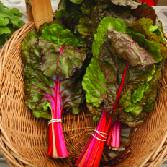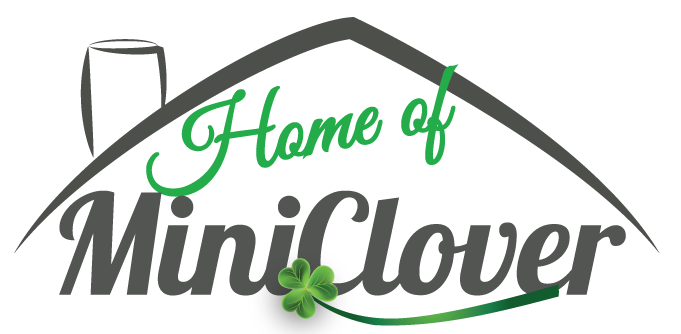-
CATEGORY ::
- All Seeds /
- All Pasture Seed /
- All Legumes
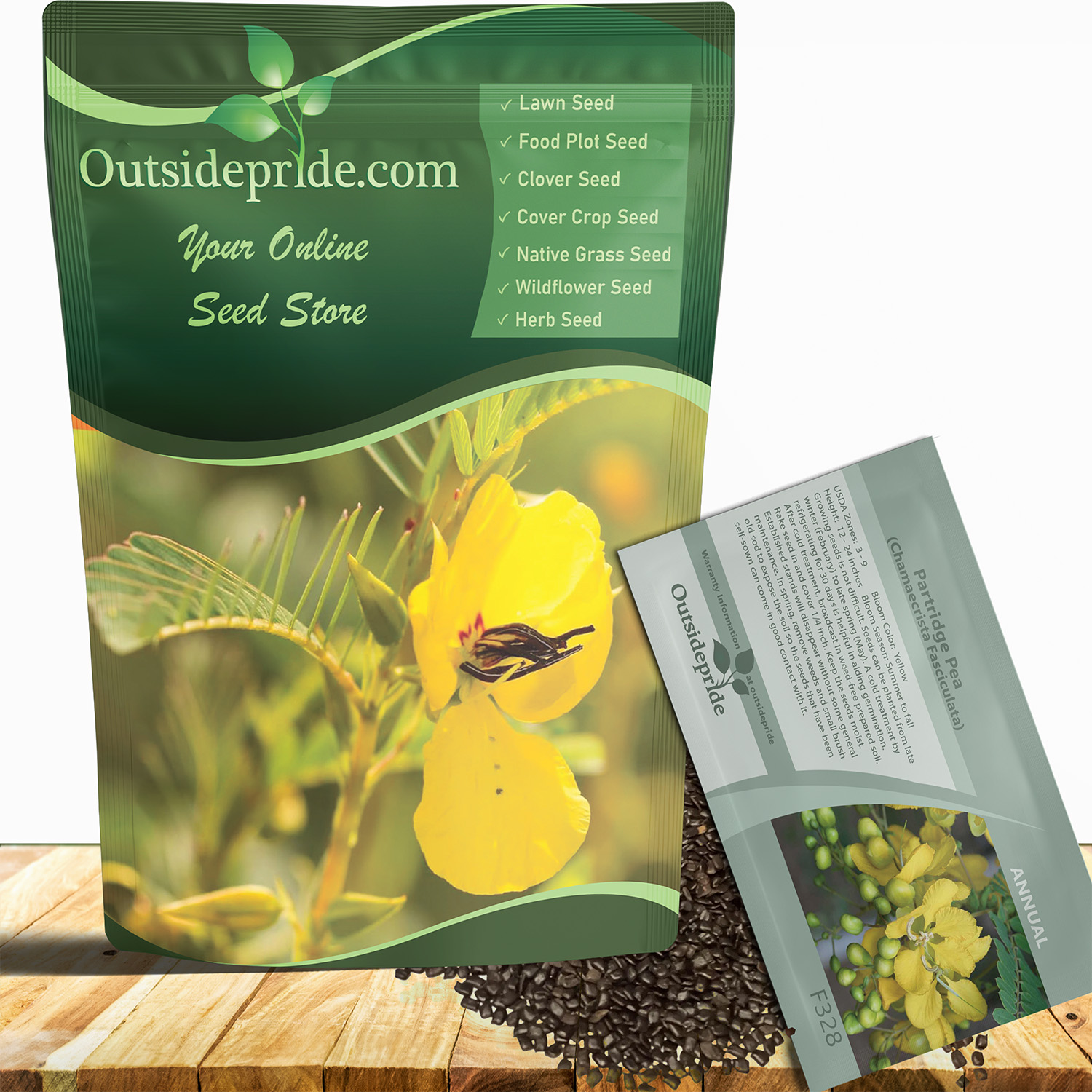

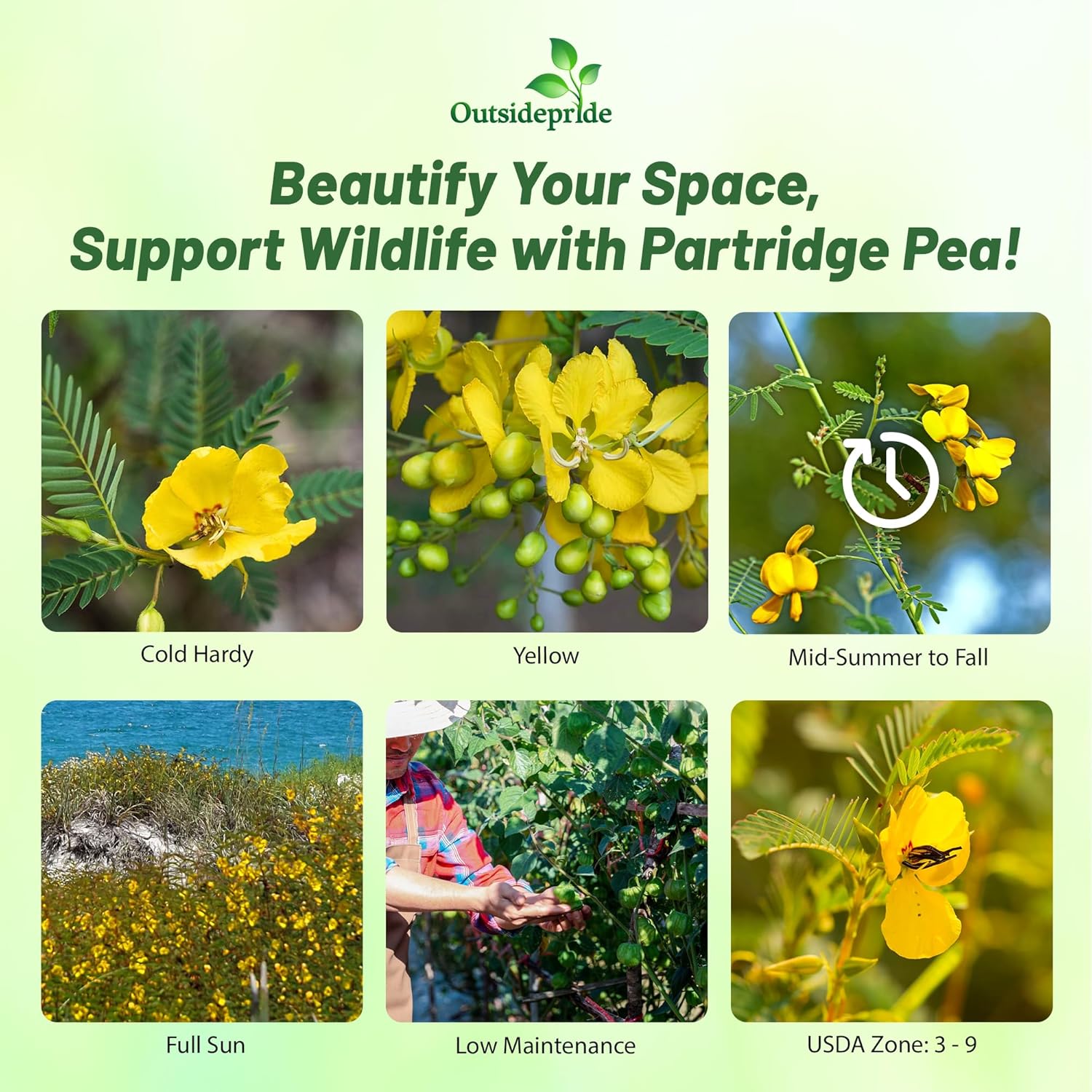
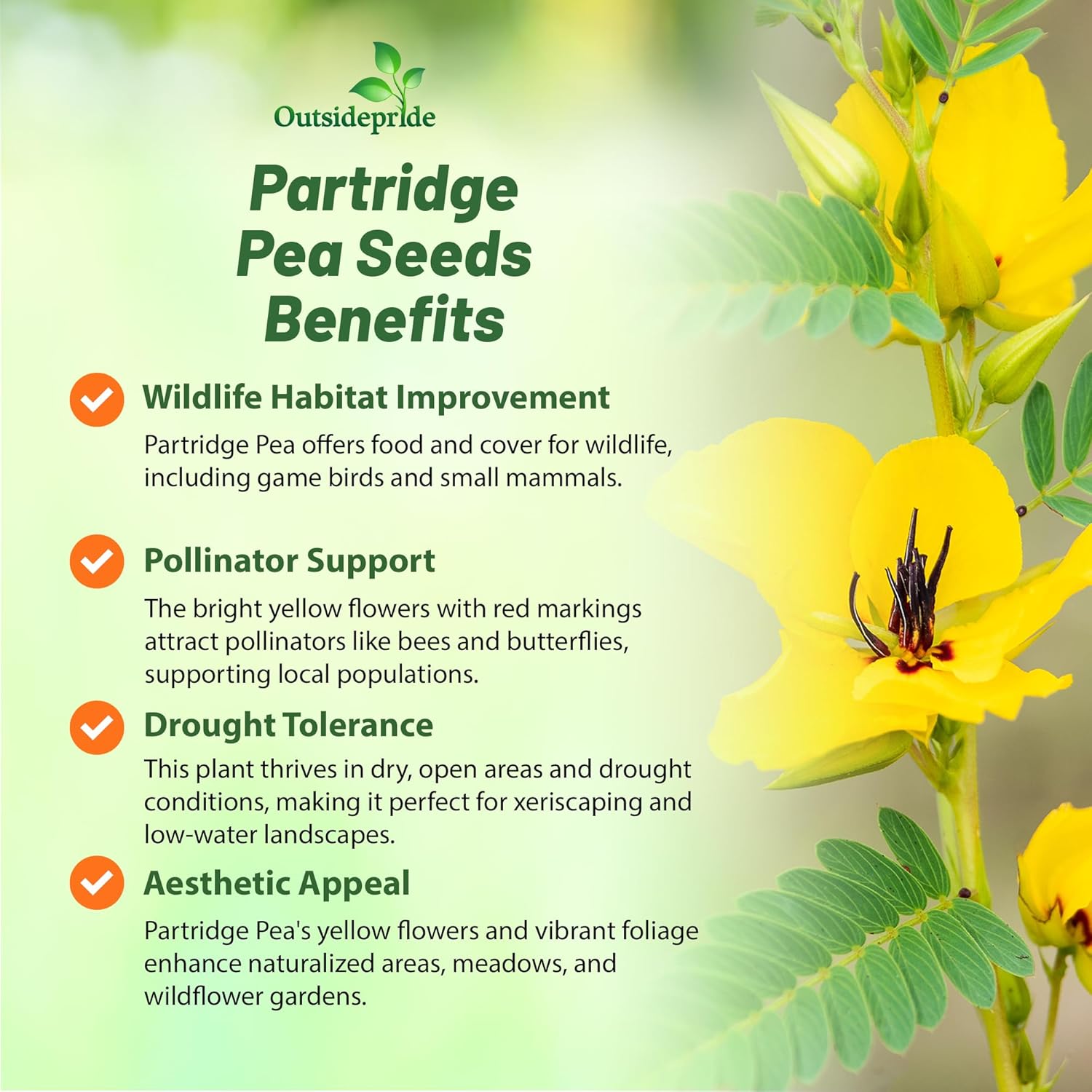
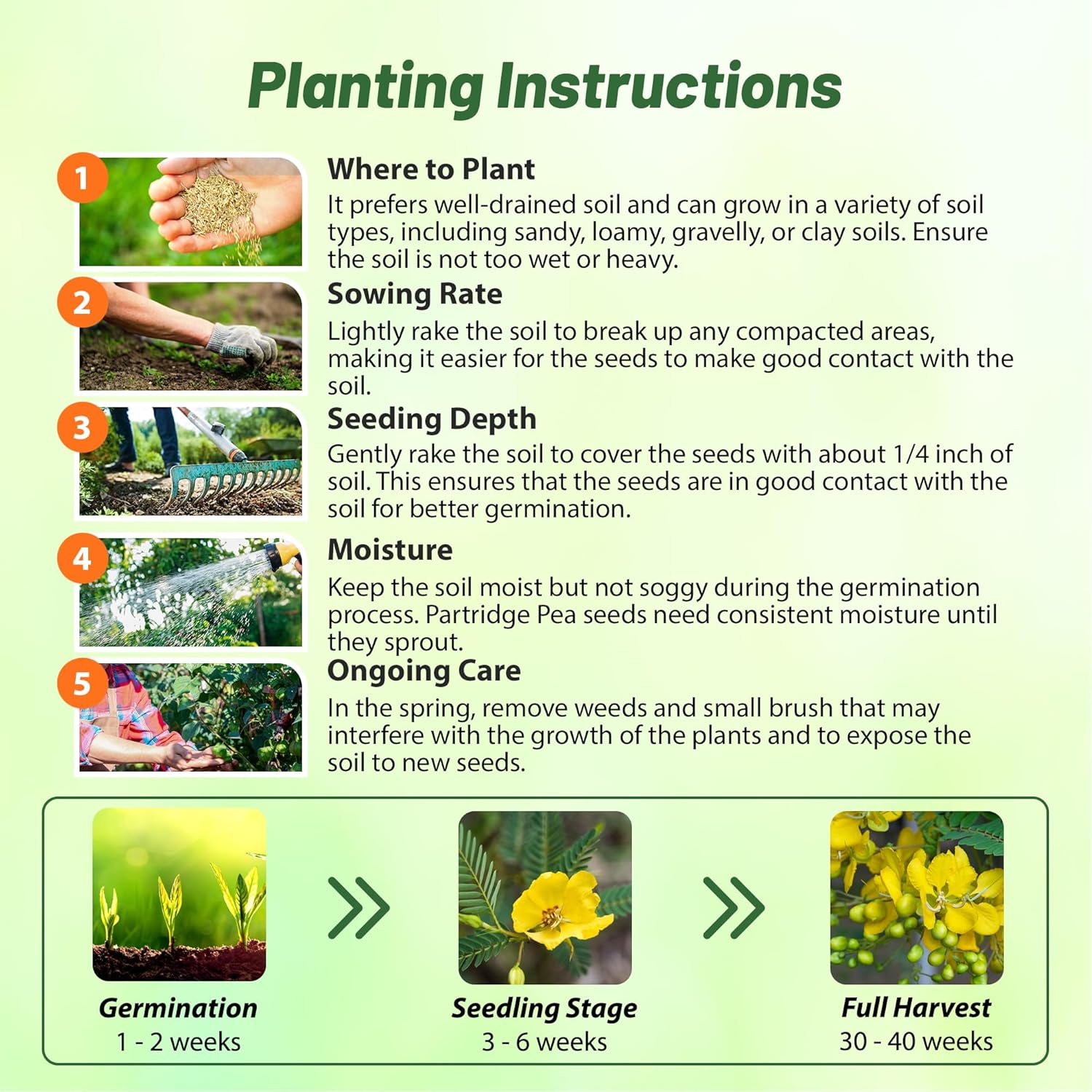
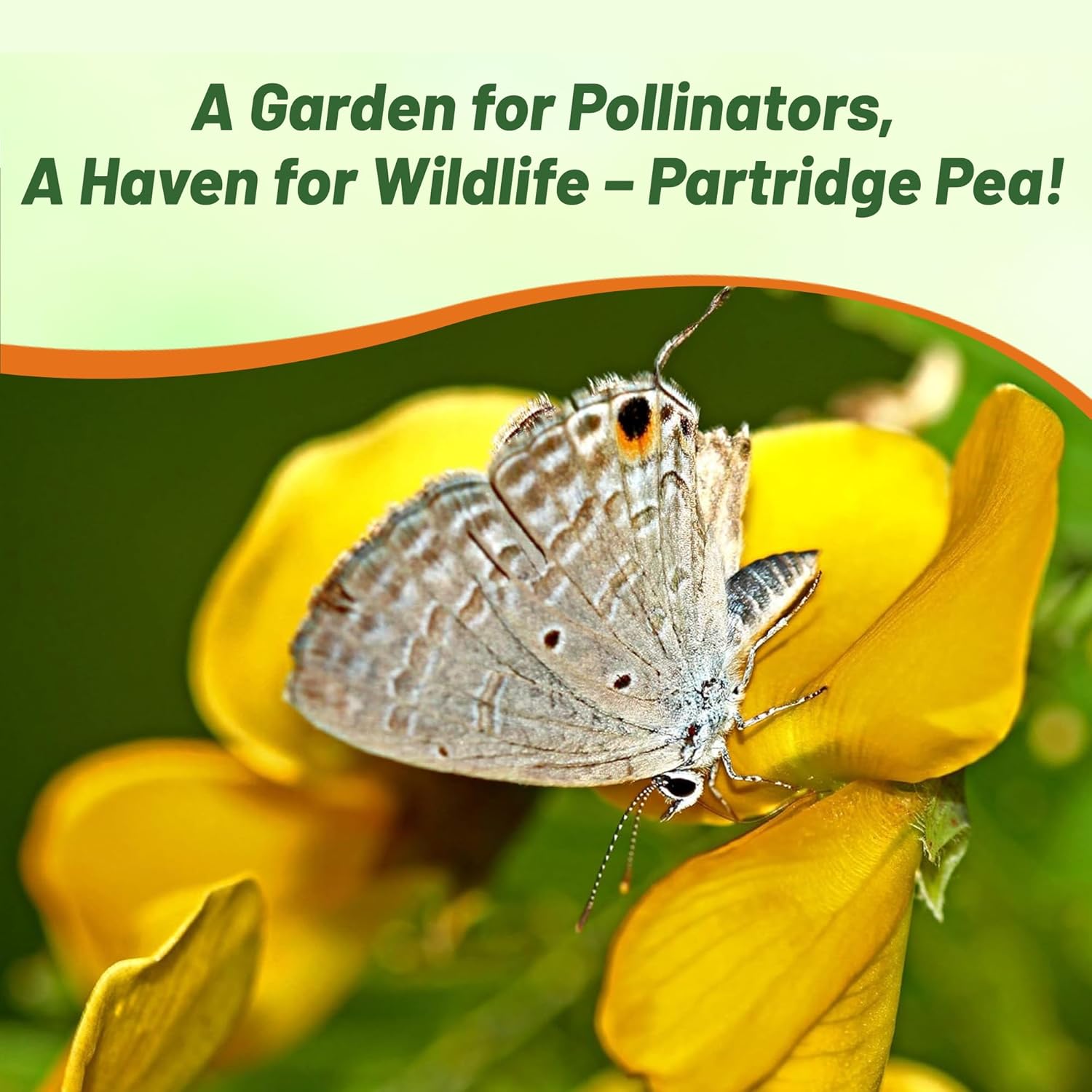
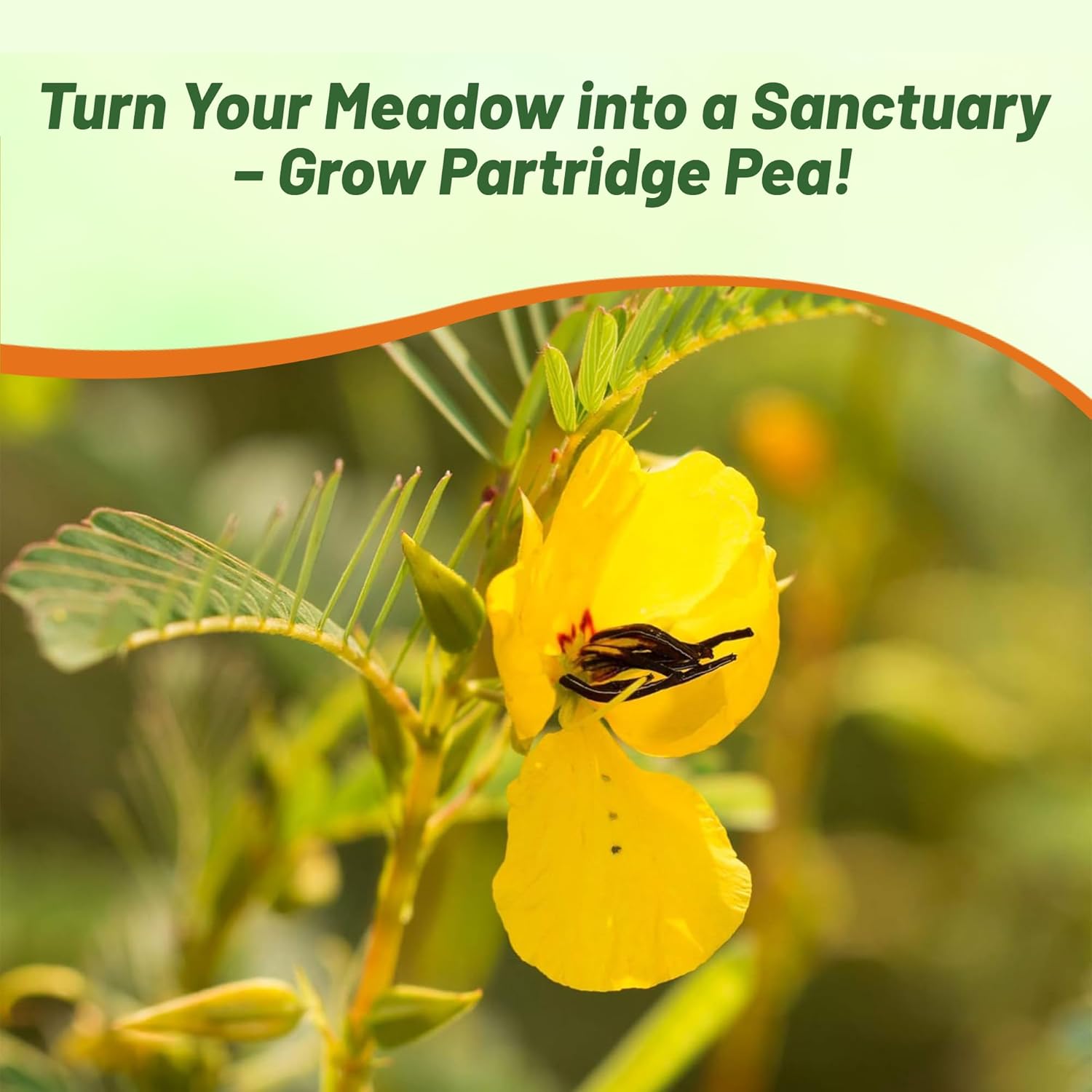

Partridge Pea Seeds
SEASON
Annual
USDA ZONES
3 - 9
HEIGHT
12 - 24 inches
BLOOM SEASON
Mid-summer to fall
BLOOM COLOR
Yellow
GROWTH RATE
Fast
ENVIRONMENT
Full sun
SOIL TYPE
Sand, loam, gravel, or clay, pH 5.6 - 7.3
FOLIAGE COLOR
Light green
LATIN NAME
Vicia villosa
SEASON
Annual
HEIGHT
ENVIRONMENT
Full sun to partial shade
USDA ZONES
3 - 9
SOWING TEMP
60F
PLANTING DEPTH
1/2 - 1 1/2 inches
SOWING METHOD
Broadcast or drill
SEEDING RATE
15 - 50 lbs per acre
ESTABLISHMENT RATE
Fast
MOISTURE REQUIREMENTS
Moderate
CROP HEIGHT
24 - 36 inches
COLD TOLERANCE
Excellent
HEAT TOLERANCE
Fair
SHADE TOLERANCE
Good
DAYS TO MATURITY
80 - 100 days
AVERAGE GERMINATION
14 days
IDEAL FOR
Ground cover, erosion control, biomass production, hay, silage, pasture, green manure, vineyards, wildlife, chicken forage, pollinator
WHEN TO PLANT
After danger of frost in spring or 5 - 7 weeks before frost in fall
PLANT CHARACTERISTICS
Nitrogen fixator, high protein, acidid soil tolerance
LATIN NAME
Pisum sativum
SEASON
Annual
ENVIRONMENT
Full sun
USDA ZONES
2 - 8
SOWING TEMP
40F - 80F
WHEN TO PLANT
Early spring to early fall
PLANTING DEPTH
1 - 2 inches
SOWING METHOD
Broadcast or drill
SEEDING RATE
75 - 100 lbs per acre
PLANT CHARACTERISTICS
Nitrogen fixator, easy establishment
ESTABLISHMENT RATE
Moderate - fast
MOISTURE REQUIREMENTS
Moderate
CROP HEIGHT
24 - 36 inches
COLD TOLERANCE
Excellent
HEAT TOLERANCE
Poor - fair
SHADE TOLERANCE
Poor
DAYS TO MATURITY
60 - 180 days
IDEAL FOR
Cover crop, green manure, pasture, hay, silage, wildlife
AVERAGE GERMINATION
10 - 21 days
LATIN NAME
Pisum sativum
SEASON
Annual
ENVIRONMENT
Full sun
USDA ZONES
3 - 10
SOWING TEMP
42F - 70F
WHEN TO PLANT
After danger of frost in spring to fall
PLANTING DEPTH
1 - 2 inches
SOWING METHOD
Drill
SEEDING RATE
75 - 100 lbs per acre
IDEAL FOR
Forage, green manure chop, cover crop, wildlife mixtures
PLANT CHARACTERISTICS
Nitrogen fixator, wildlife attractant, fast growing, excellent vigor
ESTABLISHMENT RATE
Fast
MOISTURE REQUIREMENTS
Moderate
CROP HEIGHT
36 - 48 inches
COLD TOLERANCE
Good
HEAT TOLERANCE
Good
SHADE TOLERANCE
Good
DAYS TO MATURITY
60 days
AVERAGE GERMINATION
7 - 14 days
LATIN NAME
Vicia faba
SEASON
Annual
ENVIRONMENT
Full sun
USDA ZONES
2 - 10
SOWING TEMP
41F+
WHEN TO PLANT
After danger of frost
PLANTING DEPTH
1 - 2 inches
SOWING METHOD
Drill
SEEDING RATE
1 - 2 lbs per 1,000 square feet
IDEAL FOR
Cover crops, soil enrichment, forage quality
PLANT CHARACTERISTICS
Nitrogen fixator, high yields, high protein, high biomass
ESTABLISHMENT RATE
Fast
MOISTURE REQUIREMENTS
Moderate - high
CROP HEIGHT
48 inches
COLD TOLERANCE
Fair - good
HEAT TOLERANCE
Moderate
SHADE TOLERANCE
Fair - good
DAYS TO MATURITY
80 - 100 days
AVERAGE GERMINATION
7 - 14 days
LATIN NAME
Vigna unguiculata
SEASON
Annual
ENVIRONMENT
Full sun to partial shade
USDA ZONES
5 - 10
SOWING TEMP
70F - 95F
WHEN TO PLANT
After danger of frost
PLANTING DEPTH
1/2 - 1 inch
SOWING METHOD
Drill
SEEDING RATE
30 - 90 lbs per acre
IDEAL FOR
Erosion control, nitrogen fixation, food plots
PLANT CHARACTERISTICS
Fast growing, high protein
ESTABLISHMENT RATE
Fast
MOISTURE REQUIREMENTS
Moderate - high
CROP HEIGHT
24 - 36 inches
COLD TOLERANCE
Poor
HEAT TOLERANCE
Excellent
SHADE TOLERANCE
Moderate
DAYS TO MATURITY
80 - 90 days
AVERAGE GERMINATION
7 - 10 days
About...
Partridge Pea (Chamaecrista Fasciculata) - A versatile annual that is perfect for a naturalized xeriscape setting or meadow! Grow Partridge Pea seeds for a variety of settings which include, wildlife habitat improvement, erosion control, and to beautify a natural setting with an attractive wild flower. It is very drought tolerant and perfect where water conservation is desired.MORE LEGUMES OPTIONS
Planting Directions
TEMPERATURE
55F
AVERAGE GERM TIME
14 - 28 days
LIGHT REQUIRED
Yes
DEPTH
1/4 inch
SOWING RATE
1/2 lb per 1,000 square feet
MOISTURE
Keep seed moist until germination
PLANT SPACING
If planting in rows, 3 feet apart
CARE & MAINTENANCE
Partridge Pea...less
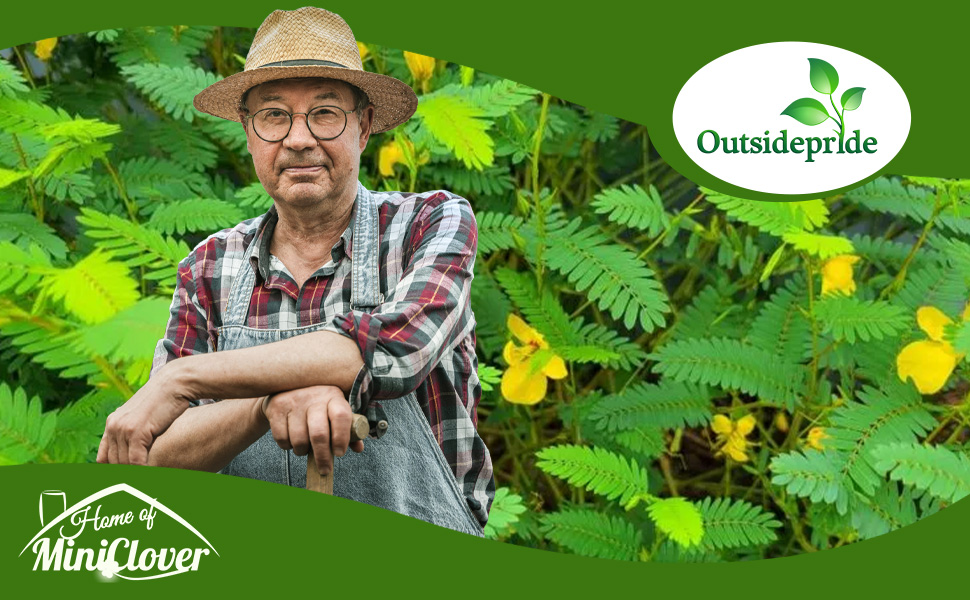
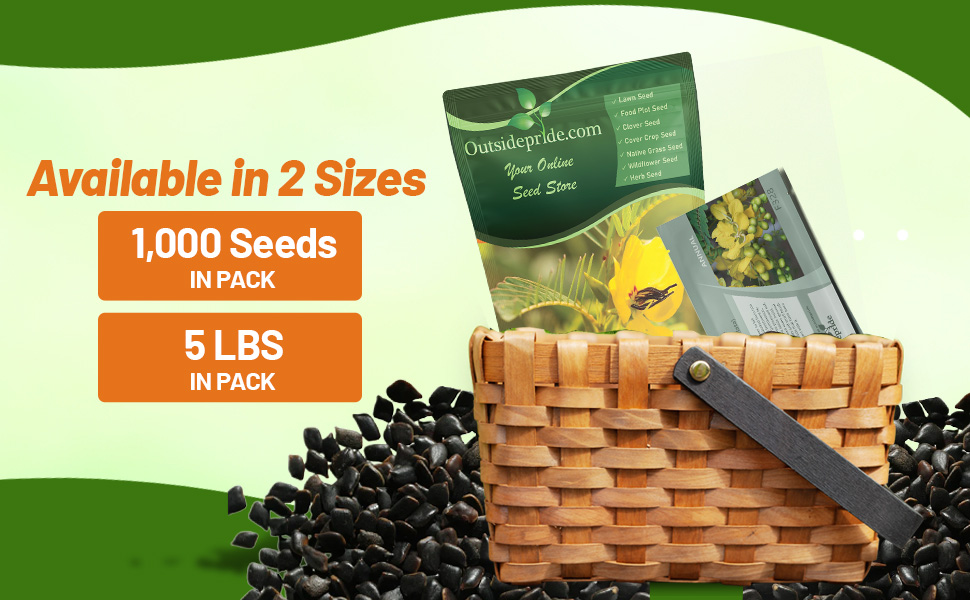
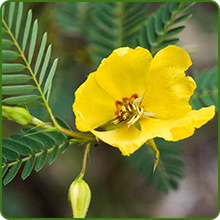
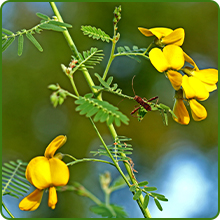
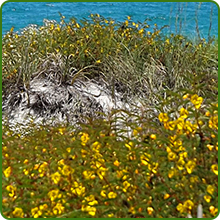
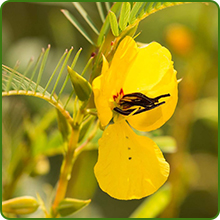
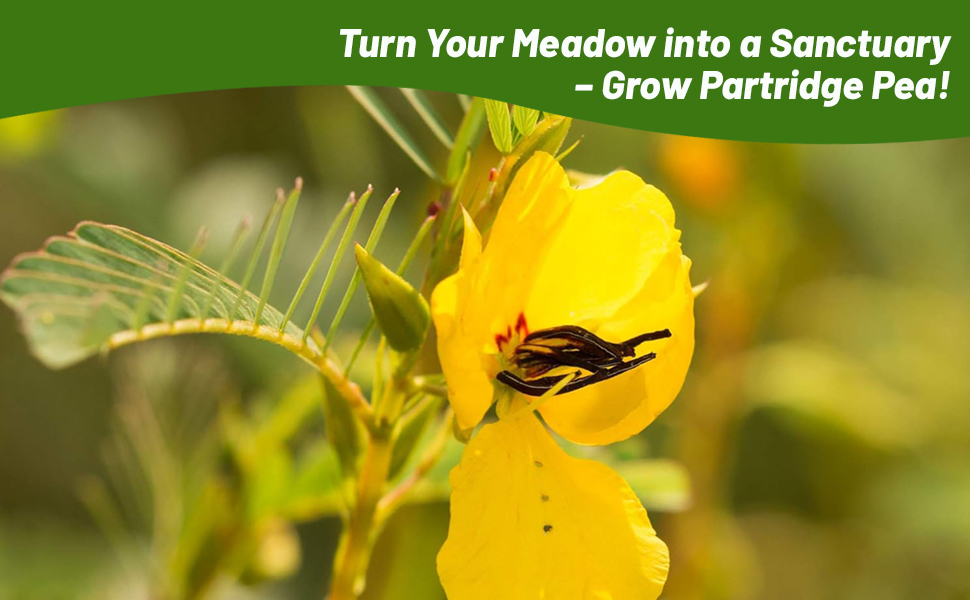
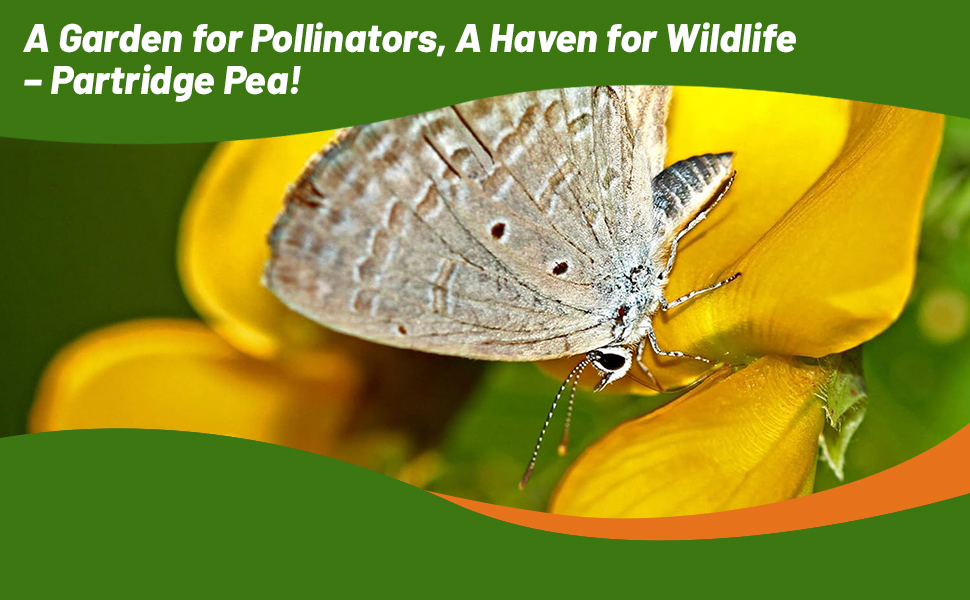
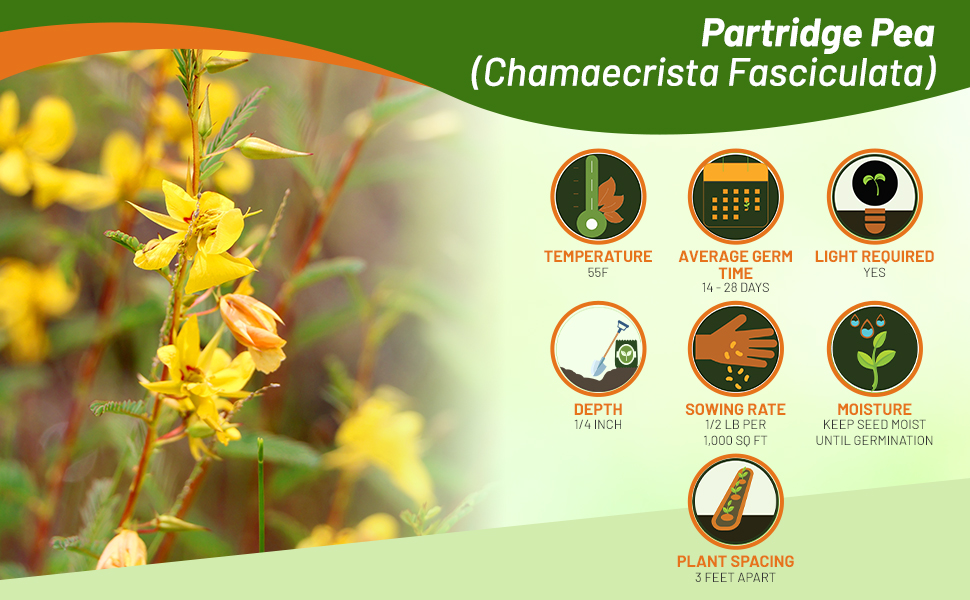
Partridge Pea (Chamaecrista Fasciculata) - A versatile annual that is perfect for a xeriscape, naturalized setting or meadow! Grow Partridge Pea seeds for a variety of settings which include, wildlife habitat improvement, erosion control, and to beautify a natural setting with an attractive wild flower. Partridge Pea has large, showy, yellow flowers. Each flower is marked with red and is followed by a narrow pod. The flowers are a good source of nectar for bees and butterflies, and the pods produce flower seed which is a major food source for game birds and songbirds. Some of the wildlife that benefit from Partridge Pea seeds are prairie-chicken, ring-necked pheasant, mallard, grassland birds, deer, turkey, dove, pheasant, rabbit, and quail. The drought tolerant plants often grow in dense stands, producing foliage that furnishes cover for upland game birds, small mammals, small non-game birds, and waterfowl.
Partridge Pea is considered an important honey plant as well. It is quite attractive in regards to both its foliage and flowering habit. Its uses include erosion control along road banks and stream banks. It prefers full sun and average to dry conditions. The soil can contain sand, loam, gravel, or clay, and because it is a legume, it will add nitrogen to the soil. Partridge Pea is easy to grow from flower seeds, but can spread readily in dry, open situations as it self-sows. It also grows wild throughout the Midwest, eastern, and southern United States in zones 3 to 9 and is resistant to drought requiring low water usage.
Growing the seeds is not difficult. Partridge Pea seeds can be planted from late winter (February) to late spring (May). A cold treatment by refrigerating the Cassia seed for 30 days is helpful in aiding germination. After the cold treatment, broadcast the seeds in weed-free prepared soil. Rake the seed in and cover 1/4 inch. Keep the seeds moist. Established stands of Partridge Pea plants will disappear without some general maintenance. In spring, remove weeds, small brush, and old sod to expose the soil so that the flower seeds that have been self-sown can come in good contact with it.
Common Questions
Does partridge pea attract any pollinators?
Birds, bees and butterflies are all attracted to the blooms of partridge peas.
Does partridge pea need much water?
No, this plant has low water requirements once established.
How is this plant commonly used?
Partridge pea is great for meadows, prairie’s, natural settings, banks, slopes and cottage gardens.

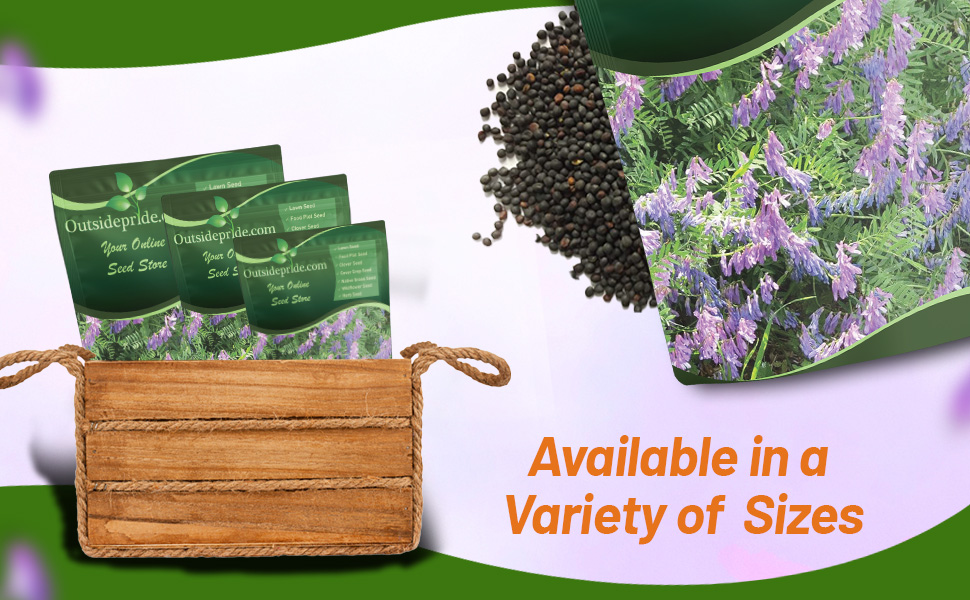
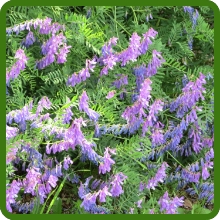
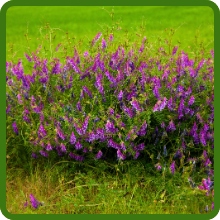
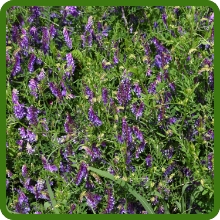
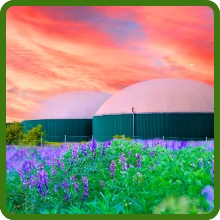
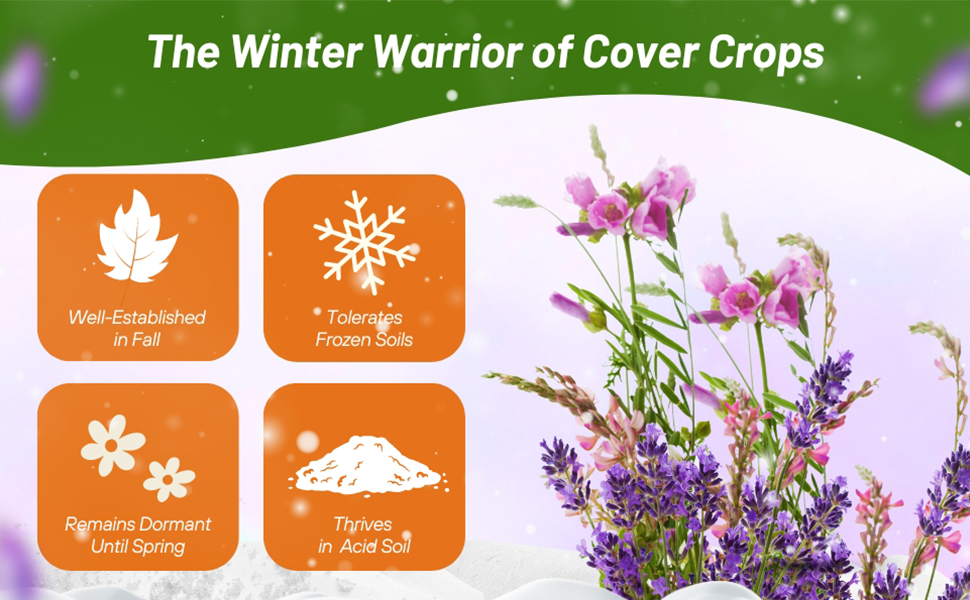
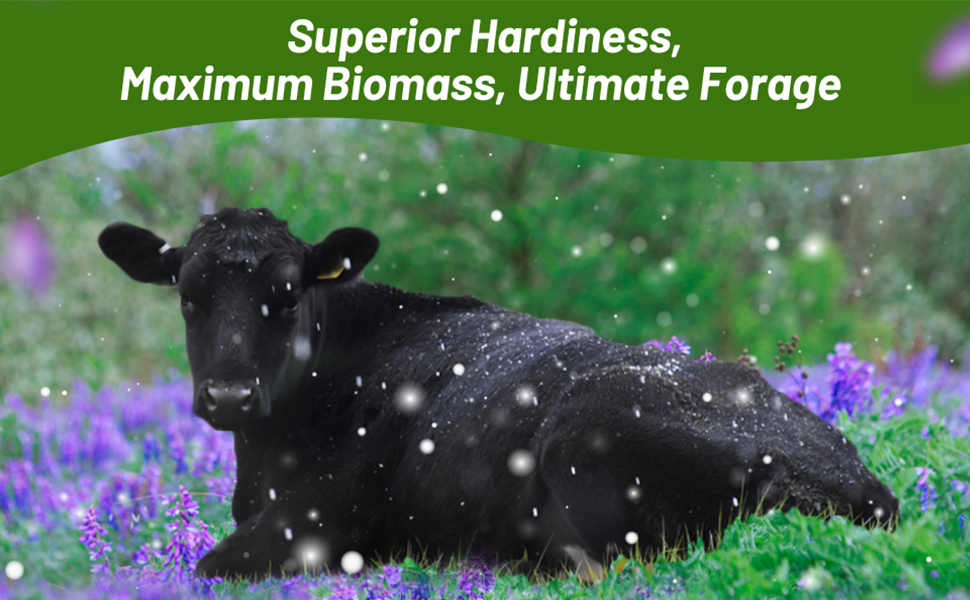
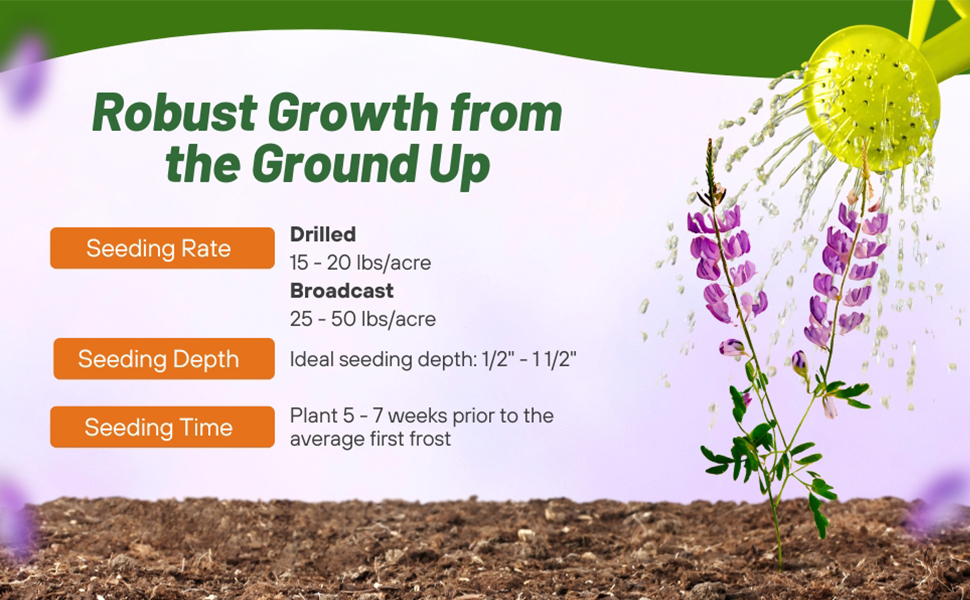
WinterKing hairy vetch has better winter hardiness equates to more biomass. More biomass provides increased forage for livestock, more biomass for cover croppers, and increased weed suppression for all. Those desiring high nitrogen-fixing legumes for green manure, forage grazing, wildlife and pollinator attractants should find WinterKing an improved option over other legumes that lack cold tolerance.
As an annual legume, hairy vetch may need to be terminated either mechanically or chemically when followed by a row crop. Some producers may find the late maturity of WinterKing reduces the potential for undesired seed propagation found in earlier maturing cover crop varieties. For livestock producers, WinterKing’s late maturity means more vegetative high value feed longer into the spring season.
WinterKing has shown potential to produce 150-200#N/acre, especially when allowed to reach maturity later in the season. This is beneficial for green manure as well as providing an extended high-protein source for grazing livestock throughout the full spring season.
Environmental preferences and Limitations
Hairy vetch tolerates cold well and is more winter-hardy than common vetch. If well-established in fall, it tolerates frozen soils, remaining dormant until spring. Warm spring temperatures bring rapid growth.
Hairy vetch seeds can be planted in soils with pH ranging from 4.9 to 8.2, but does best when pH is from 6.0 to 7.0. It can thrive in acid soils where clover and alfalfa do not grow well.
Hairy vetch does best on sandy or sandy loam soils but grows on most soil types if drainage is good. It tolerates some temporary flooding. Can withstand being flooded for long periods of time; however, stand quality and growth generally decline if there are long periods of flooding or saturated soils. It is somewhat shade-tolerant and more drought-resistant than the other vetches.
Inoculated Seed - We now offer hairy vetch seed which has been coated with an inoculant for better establishment. Nitrogen fixation is a one of the key values found in legumes and can only occur with the proper inoculation. Although many strains or Rhizobium may be present in the soil, all are not equally beneficial. With Nitro-Coat® each seed is inoculated with the correct Rhizobium strains and coated through a proven process that ensures a very high level of successful inoculation. A key to any successful establishment and early seed development is moisture. Nitro-Coat® is naturally water absorbent and helps attract soil moisture to the seed, getting your stand established quickly. This coating process which Outsidepride utilizes, assures that only the top-performing and crop-specific rhizobia will be applied to ensure your clovers reach maximum nodulation, stand establishment, and yield potential. With Nitro-Coat® each seed is inoculated with the correct Rhizobium strains and coated through a proven process that ensures a very high level of successful inoculation. The weight of the hairy vetch seeds will contain approximately 34% coating material that contains the inoculant and water holding material for better establishment and viability of the seed. There is no difference in the seeding rates between the coated and raw seed due to the increased germination and viability of the bulk hairy vetch seeds that are coated and inoculated. This coating material is not OMRI certified.
















